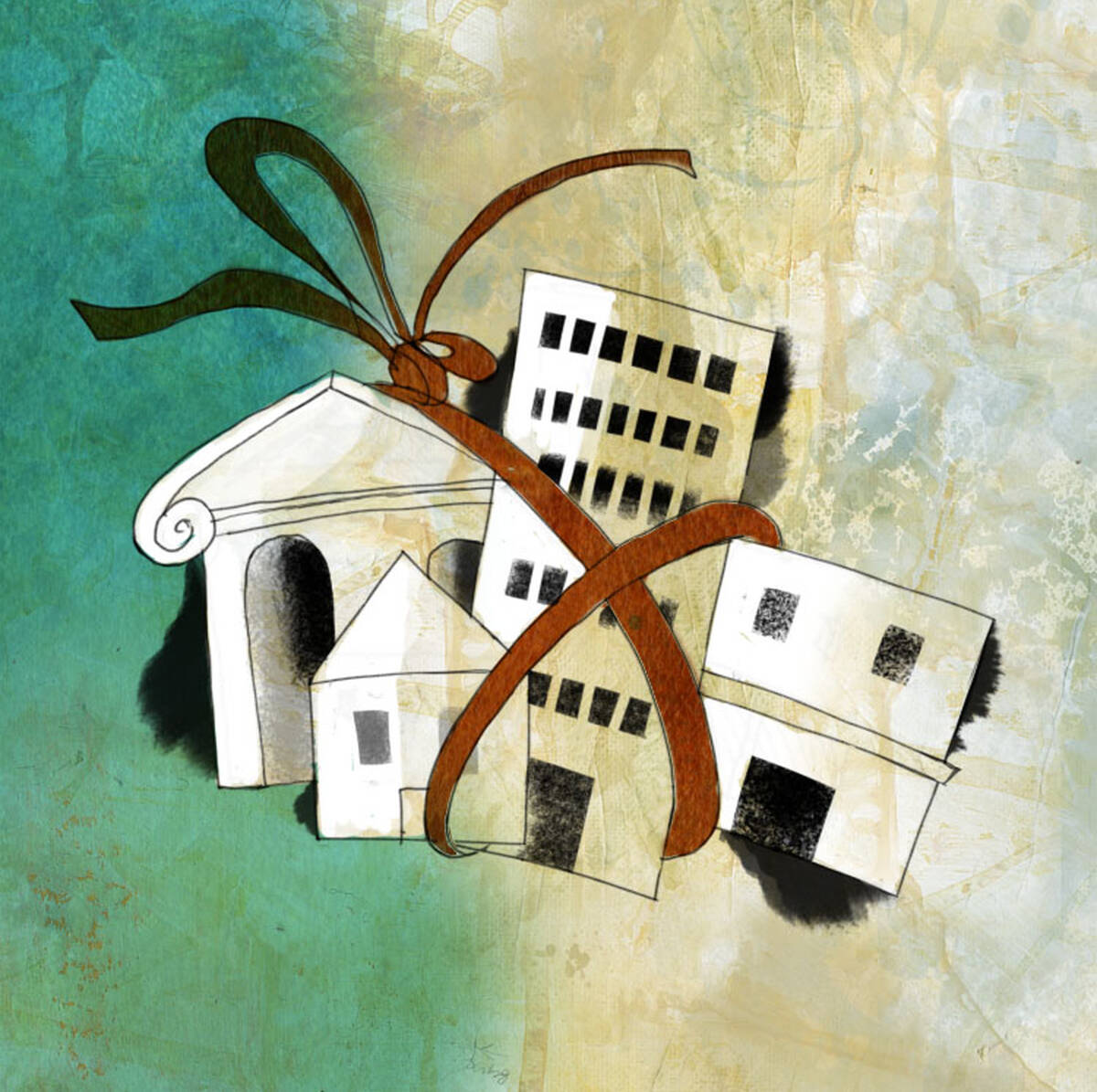Finance & Accounting Oct 5, 2020
What’s Next for Real Estate Markets?
As the pandemic continues to upend how we live, work, and play, the future of residential and commercial markets remains very much in flux.

Yevgenia Nayberg
The COVID crisis has thoroughly upended how people live, work, and shop. And this, in turn, has upended real estate markets.
Whether it’s tech workers abandoning dense urban cores for more space in the countryside, restauranteurs converting from dine-in to takeout, or companies suddenly going virtual while locked into an office lease, it’s clear that the ways we are using space—and the amount we’re willing to pay for it—are changing.
“The COVID crisis has led to a pretty big reallocation in the shares of goods that people spend money on,” says Charles Nathanson, an associate professor of finance at the Kellogg School.
“For a lot of people, it makes sense to dramatically increase the amount they are spending on the shelter because they’re spending so much more time at home,” he says. But, of course, the calculus looks quite different for companies renting office space for a workforce that may not be coming back anytime soon.
So what might we expect from residential and commercial real estate as we head into the year ahead?
“The key to the real estate markets now is knowing how temporary or permanent the effects of the pandemic are going to be,” says Nathanson.
Residential Sales Are a Bright Spot
When cities across the U.S. went into lockdown in early 2020, several things happened that ended up having a positive effect on housing sales.
First, people suddenly working from home became less dependent on living near their workplace, so they could consider buying beyond what they had previously considered a reasonable commute. Second, with whole families now cooped up at home, larger spaces—and yards—became more desirable. And third, many of those same people, in the absence of vacation and entertainment spending, have more money to invest in housing.
“There is a substitution effect, where all of a sudden people want way more residential space than they wanted six months ago,” Nathanson says. “So that’s why I think of why we may have situations where we see big house-price increases, even as a lot of people are losing their jobs.”
Still, despite the notable boost in demand, housing developers are taking a more wait-and-see approach. New-housing starts are up over historical averages, but this may be due more to developers playing catchup after a big dip during the spring and early summer lockdowns than to an enduring trend in new suburban housing.
“Building a house is a pretty long-term investment,” Nathanson says. “You don’t want to do that if this is all over in a year. Which is why, to me, this situation is so unique. There’s a huge short-term demand shift for where people want to live. But if it’s all going to revert in a year, then it won’t make sense to build new developments.”
Given the combination of higher demand and tighter inventory, Nathanson predicts that the residential housing market is likely to see prices continue to rise—and unlikely to experience the volatility of 2008–2010.
“Some people might lose their jobs and, they might not make payments, but in markets where prices are rising, they should be able to sell their house and pay back a lot of their mortgage. Or if the bank repossesses it, it won’t be as big of a financial hit to the bank because the offset value will not have fallen—so I wouldn’t be worried about a big foreclosure crisis,” Nathanson says, “or the ripple effects in neighborhoods when you have lots of vacant houses and it hurts property values.”
Rentals Will Fluctuate
While home sales are likely to remain robust, the residential rental market faces a more uncertain future, particularly as government support for renters—including eviction moratoria—begin to expire and the job market continues to lag.
“Rents are more about the here and now,” Nathanson says, making them more volatile in response to shorter-term uncertainty.
“We might see a lot of commercial property turning into residential housing. You already see it in those old factories that got turned into loft apartments. But you would just see way, way more of that.”
— Charles Nathanson
He notes that an uptick in move-outs and evictions, if owners can’t find renters to replace them, could put stress on the residential real estate markets.
So while building owners may want to take advantage in the near term, the fact that much of the rental stock is in cities—many of which are seeing an exodus—means that demand may eventually dry up. And if the U.S. sees another spike in unemployment, landlords may need to renegotiate leases with tenants—and mortgages with banks—to avoid foreclosures.
“If the uncertainty is longer lasting, you might see a very significant decline in economic activity in central cities,” Nathanson says, which could make residential rentals in those areas less attractive.
Commercial Real Estate Is Up for Grabs
The future looks most uncertain in the commercial real estate market, which has experienced a significant decline in economic activity.
“In commercial real estate, there are all these long-term financial obligations that are based on the assumption that the demand would continue, which … it just fell off a cliff this spring,” Nathanson says. “So now it’s a question of who’s going to take the loss.”
If, for example, a mom-and-pop clothing store that holds a 20-year lease on a storefront can’t open, it may reach out to the landlord to see if it can make partial payments instead. And rather than kick them out at a time when few other retailers may be looking to replace them, the landlord may renegotiate to at least collect something. In turn, the landlord may look to its own bank to adjust the terms of its mortgage.
“All the parties involved have pretty strong incentives to try to work things out,” Nathanson says.
If indications seem to point to a longer slog—perhaps a new normal where safety concerns or work-from-home habits make retail stores and office spaces less desirable—we are likely to see dramatic changes in the way commercial real estate is utilized. Landlords facing a radically altered long-term outlook for commercial real estate may opt for a “rip off the band-aid” approach.
“We might see a lot of commercial property turning into residential housing,” Nathanson says. “You already see it in those old factories that got turned into loft apartments. But you would just see way, way more of that.”
Or, if urban cores also become less attractive to residents, those same commercial properties might be converted into distribution centers for a delivery-centric commercial economy.
“You may have areas of huge office buildings that are now just giant Amazon warehouses, so they have tighter distribution networks,” Nathanson says. “If we all knew for sure this would last 20 years, my guess is we would start to see that immediately. But because we don’t, I think people are just waiting.”



